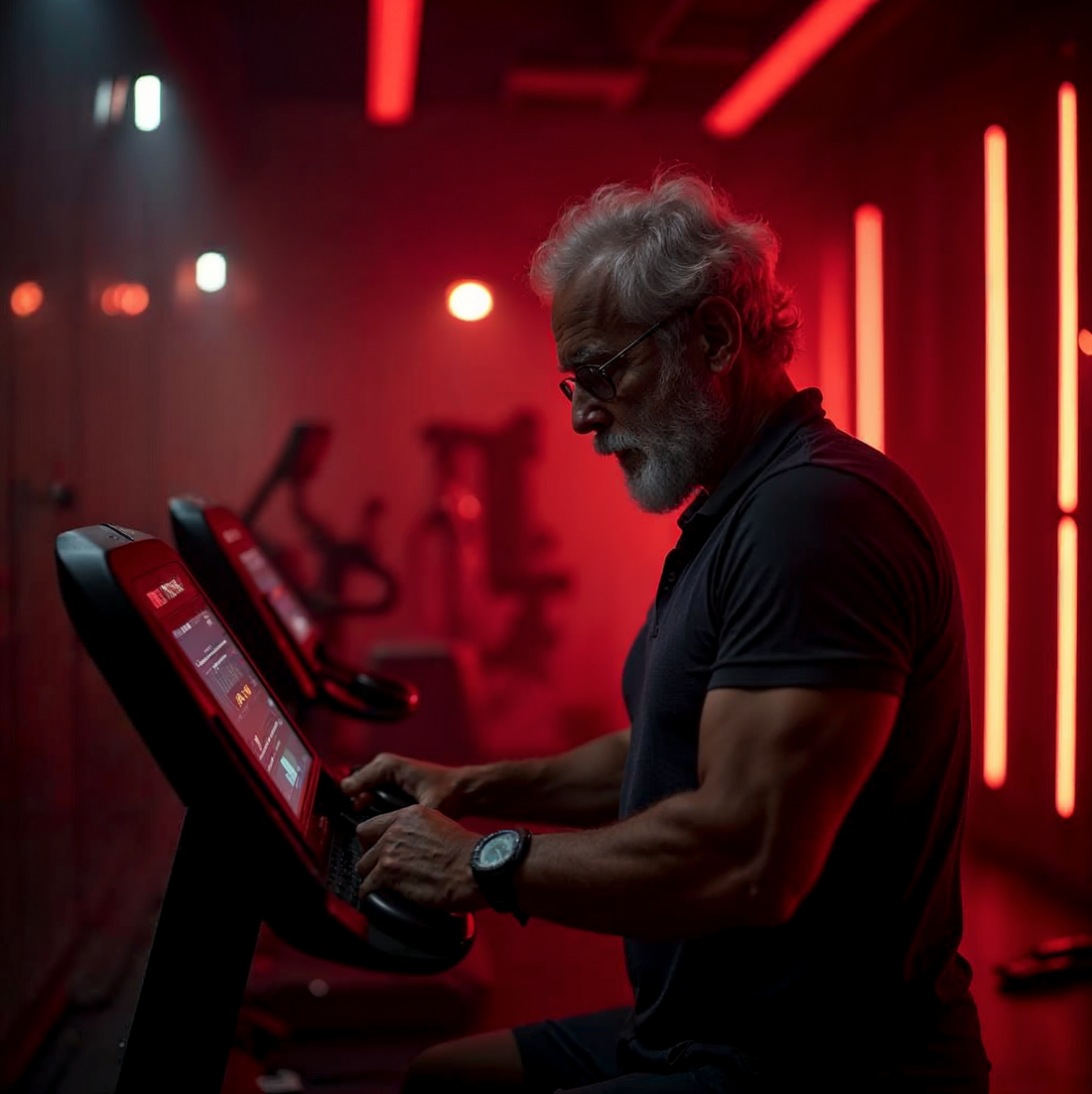
Red Light Therapy for Gym Performance; Injury Recovery: What the Science Actually Says
TL/DR
-
PBM (red/near-infrared light) can improve certain exercise outcomes and reduce next-day soreness when dosed and timed well.
-
There’s growing evidence that PBM helps tendinopathy and post-injury pain/function.
-
Dosing and timing matter a lot. Professional bodies (e.g., WALT) publish dose ranges; under- or over-doing it likely blunts benefits.
What is PBM?
Photobiomodulation uses low-level red (≈630–670 nm) and near-infrared (≈800–880 nm) light to trigger cellular changes— non-thermal, not a heat treatment. Proposed mechanisms include stimulating mitochondrial cytochrome-c oxidase, modulating nitric-oxide signalling, bumping ATP, and producing a brief, signalling-level ROS pulse that may tilt cells toward repair.
Does it help training adaptations or performance?
Meta-analyses & reviews
-
Sports Medicine 2022: PBM showed ergogenic effects in some modes (e.g., single-joint, running/cycling tasks) when applied before exercise, with small-to-moderate effects and high protocol variability.
-
Arch Phys Med Rehabil 2023: In healthy people, PBM modestly improved performance and reduced fatigue across pooled trials, again with considerable heterogeneity.
-
Lasers in Med Sci / Lasers in Med Sci 2024–2025: Pre-exercise PBM may improve muscle endurance and short-term recovery. Whole-body PBM shows recovery benefits and performance boosts.
Individual RCT flavour
-
Some trials report less post-set strength loss and better repeated-sprint/cycling outputs when PBM is done pre-workout
DOMS & recovery between sessions
Pooling trials, pre- or post-exercise PBM often reduces next-day soreness and markers of muscle damage, with quicker force recovery—again, with substantial protocol differences.
Injury rehab: tendons & soft tissue
-
Tendinopathy (systematic reviews/meta-analyses): LLLT/PBM can reduce pain and improve function in lower-extremity tendinopathies and plantar fasciitis when combined with exercise.
-
Tendinopathy (broader meta-analysis): Red/NIR PBM shows beneficial pain/function changes across tendinopathy RCTs.
-
Achilles (new RCT, Oct 5 2025): In runners with non-insertional Achilles tendinopathy, a three-arm RCT compared exercise alone vs exercise + radial pressure waves vs exercise + PBM.
How to use it in the gym (practical guide)
Important: These are research-informed ranges, not medical advice. Follow device instructions, and if you’re rehabbing an injury, coordinate with a clinician.
1) Timing
-
Performance/strength sessions: Apply ~5–30 min pre-workout to the working muscle groups. Some studies also use immediate post-workout for recovery; whole-body PBM tends to be pre-exercise for performance, post-exercise for recovery.
2) Wavelengths & dose
-
Wavelengths: Red (≈630–670 nm) or NIR (≈800–880 nm). Mixed arrays work well.
-
Dose (energy at skin): Professional guidance from WALT provides dose tables by condition; most sport/soft-tissue protocols land roughly in the 4–60 J/cm² window depending on device/target depth, with smaller areas needing less. Avoid “more is better”—there’s a dose window.
-
Coverage: For local muscles/tendons, place the emitter close to skin over the target.
3) Frequency
-
Training blocks: 2–5 sessions/week in studies. For injuries, schedules often mirror rehab visits (e.g., 2–3×/week) alongside loading.
4) Expectations
-
Benefits (when present) accrue as small-to-moderate changes — less soreness, quicker force recovery, and better reps/outputs.
Safety & side effects
PBM has a strong safety profile in clinical settings, with few immediate adverse effects reported; eye protection is still advised for lasers, and you should avoid shining devices directly into eyes. Do not irradiate known malignancies, and use caution with pregnancy, photosensitising meds, and light-sensitive conditions—discuss with a clinician.
Bottom line
-
For lifters and runners: PBM is a credible edge tool for recovery and some performance contexts — worth testing if you’re consistent with training, sleep, and nutrition.
-
For injuries: Think add-on to evidence-based rehab—not a shortcut. Dose and timing matter; follow recognised guidance (e.g., WALT) and your clinician’s plan.
References (with links)
-
Dutra YM, Malta ES, Elias AS, Broatch JR, Zagatto AM. Deconstructing the Ergogenic Effects of Photobiomodulation: A Systematic Review and Meta-analysis. Sports Medicine (2022). (SpringerLink)
-
Photobiomodulation for improving muscular performance & reducing fatigue in healthy people: Systematic review & meta-analysis. Archives of Physical Medicine & Rehabilitation (2023). (ScienceDirect)
-
Duan R, et al. Can pre-exercise photobiomodulation improve muscle endurance and promote recovery…? Lasers in Medical Science (2024). (SpringerLink)
-
Forsey JJ, et al. Whole-body photobiomodulation improves post-exercise recovery but does not enhance anaerobic performance. Lasers in Medical Science (2023). (SpringerLink)
-
Tomazoni SS, et al. Phototherapy (LLLT/LED) and exercise performance/recovery: systematic review & meta-analysis. Photomed Laser Surg (2017). (ScienceDirect)
-
Tripodi N, et al. Red/NIR PBM for pain & function in tendinopathy: systematic review & meta-analysis of RCTs. BMC Sports Sci Med Rehabil (2021). (BioMed Central)
-
Ruiz-Cruz E, et al. LLLT in lower-extremity tendinopathy & plantar fasciitis: systematic review & meta-analysis. BMJ Open (2022). (BMJ Open)
-
Tenforde AS, et al. Exercise, radial pressure waves, and PBM for non-insertional Achilles tendinopathy in runners: RCT. BMJ Open Sport & Exercise Medicine (Oct 5, 2025). (bmjopensem.bmj.com)
-
Navarro-Ledesma S, et al. Whole-body PBM: randomized, triple-blinded clinical trial with 6-month follow-up. Frontiers in Neuroscience (2024). (Frontiers)
-
Quirk BJ, Whelan HT. Light, Cytochrome-c Oxidase, and Nitric Oxide—Review of the Evidence. Photobiomodulation, Photomedicine, and Laser Surgery (2020). (Liebert Publishing)
-
WALT (World Association for Photobiomodulation Therapy) dosage recommendations & guidance (accessed 2025). (waltpbm.org)